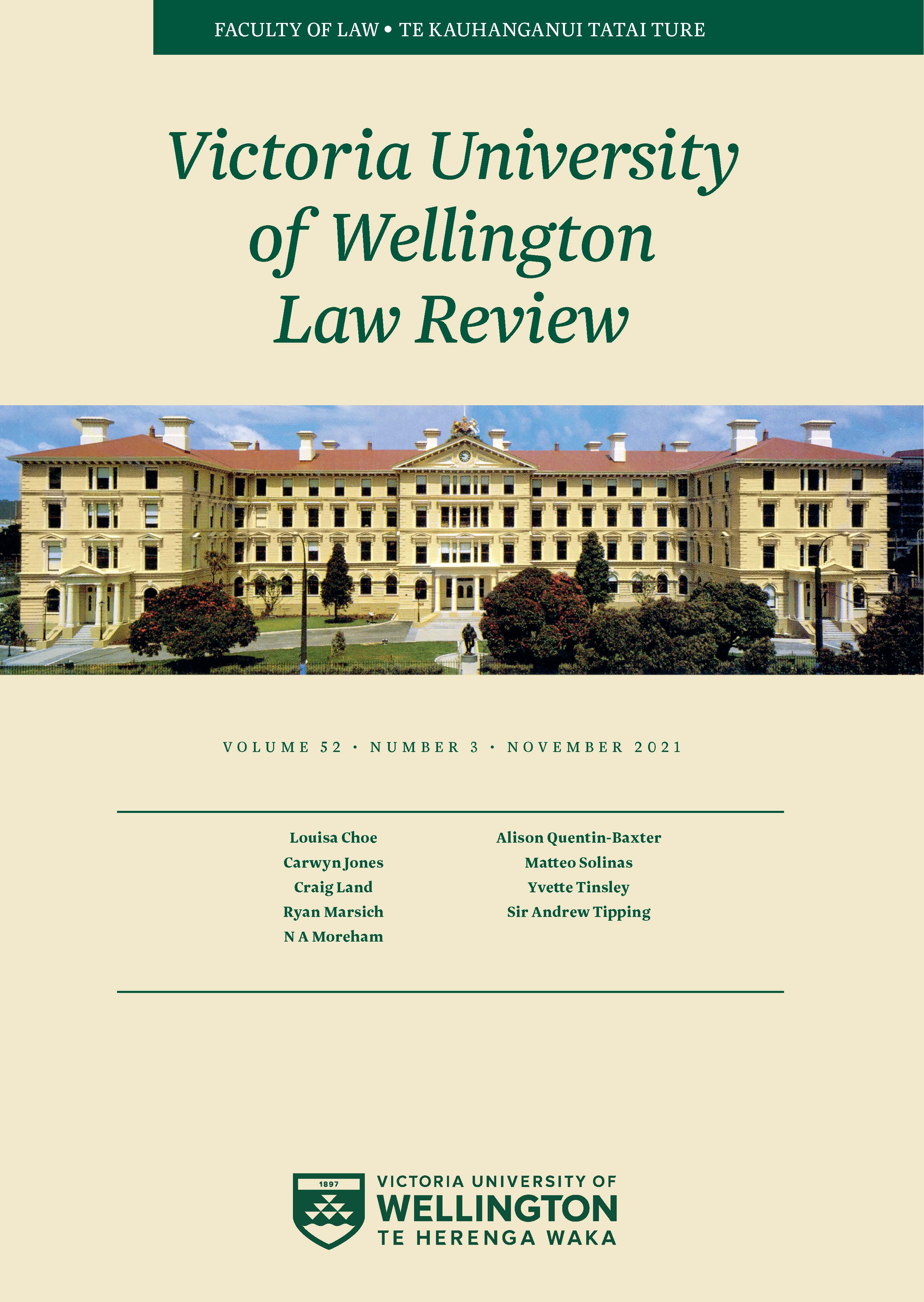Pushing the Boundaries: A Tentative Taxonomy of Money in New Zealand Private Law
DOI:
https://doi.org/10.26686/vuwlr.v52i3.7334Abstract
This article seeks to define the boundaries of money in the context of proprietary taxonomy in New Zealand. It suggests that the traditional legal concept of money exclusively based on state issued (fiat) currency is dated, as does not accommodate the near-universal use of bank money in commercial transactions, nor the recent technological changes introduced by virtual currencies. As long as something functions as a means of payment and the holder has the right to exchange it for legal tender, the divide between mutually agreed payment obligations into those made on the base of fiat currencies and those not, becomes artificial. In providing responses to similar commercial arrangements and parties' legitimate expectations, not only coins and banknotes, but also balances held by customers in banking institutions, foreign money, and digital currencies, should qualify as money for private law purposes.
Downloads
Published
Versions
- 2021-12-15 (2)
- 2021-12-13 (1)
How to Cite
Issue
Section
License
Authors retain copyright in their work published in the Victoria University of Wellington Law Review.


